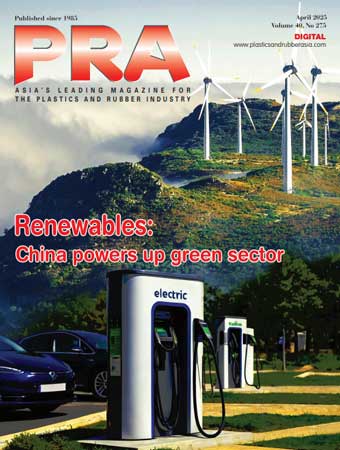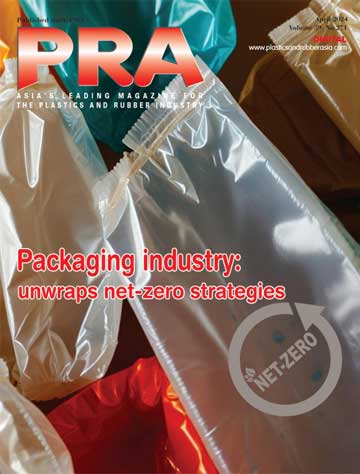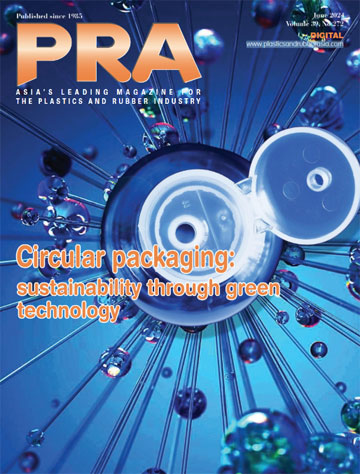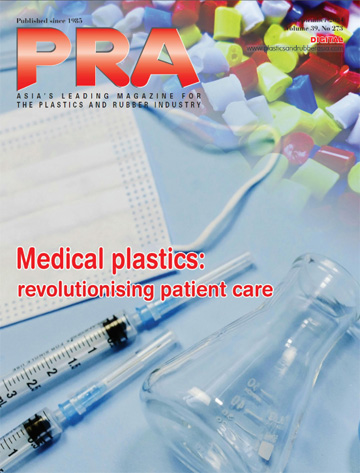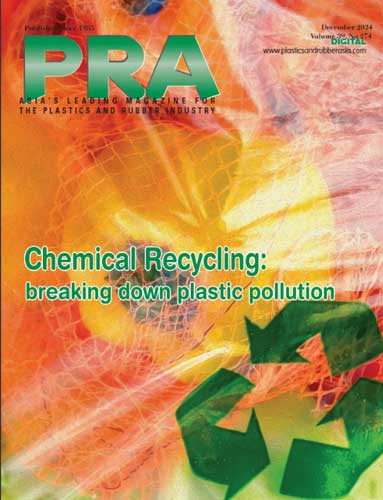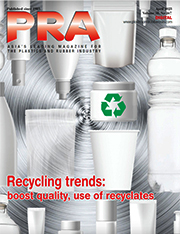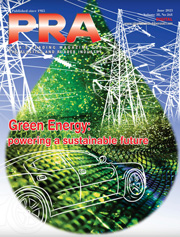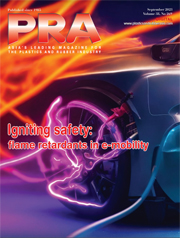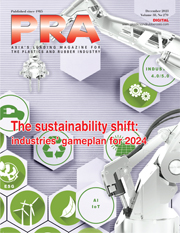A sea of solutions to keep plastics at bay
Coastal and marine plastics pollution is both a growing environmental concern and a promising opportunity for circular innovation through recovery and reuse, says Angelica Buan in this report, taking a look at programmes being undertaken in Asia.
Although the terms Ocean-Bound Plastic (OBP) and Ocean Waste Plastic (OWP) are sometimes used interchangeably, they refer to different stages in the plastics pollution lifecycle. OBPs are discarded plastics found near coastlines in regions with inadequate waste management, while OWPs, by contrast, are plastics that have already reached marine environments and are later recovered from oceans or waterways. Whether intercepted before reaching the sea or retrieved after entering it, both types of waste can contribute to circular economy solutions through recovery and reuse.
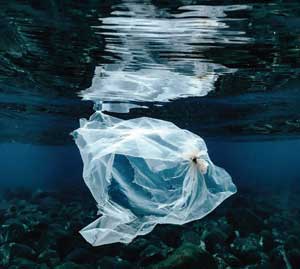
Whatever the case, it all boils down to the fact that plastic pollution remains a serious environmental challenge. According to the United Nations Environment Programme (UNEP), the equivalent of 2,000 garbage trucks filled with plastic waste is dumped into oceans, rivers, and lakes daily.
A report by Our World in Data states that 70% to 80% of ocean plastics originate from land-based sources, primarily via rivers and coastal runoff. The remaining 20% to 30% comes from marine activities such as lost fishing gear and abandoned vessels.
Meanwhile, Asia is the largest contributor to ocean plastic, responsible for 81% of global inputs, with the Philippines alone accounting for more than one-third of the total.
Revisiting the plastic bag ban
Of the initiatives adopted to curb marine litter, the most widely espoused is the plastic bag ban, as a measure not only to stop pollution at source but also to reduce the production of materials that would later become a source of pollution at the end of their service life.

The notoriety of how plastic bag bans have been enforced, from tax levies to fines on establishments, is either lauded or decried by consumers, who have to cope with less durable paper bags, and by businesses that use and produce plastic bags, which have had to remodel their operations to comply.
A 2024 study by Ocean Conservancy/, which identified plastic bags as leading among the top five ocean plastic polluters, reported a 29% drop in plastic bags found on beaches following plastic bag bans from 2022-2023. In the US alone, 100 billion/year plastic grocery bags were used, and on average, each bag was used for only 12 minutes before being discarded.
Similar findings were reported in a recent joint study by the EcoWaste Coalition and De La Salle University– Dasmariñas. The study, funded by the Korea International Cooperation Agency (KOICA) Philippines and the Korea Marine Environment Management Corporation through Our Sea of East Asia Network (OSEAN), recorded a decline in marine litter and total collected waste in Manila Bay, a 12-km natural harbour that serves the port of the country’s capital.
It recorded a 36% decrease in marine litter and a 42% reduction in total collected waste from 2023-2024 across more than ten project sites in two areas outside Manila – Cavite and Bataan, as well as in the National Capital Region.
However, the research also noted a 16% increase in litter during the wet season. Over 91% of the collected litter was still plastic waste, with hard/flexible packaging accounting for the majority.
Global push on plastic pollution
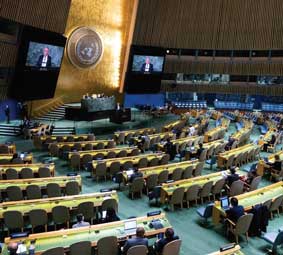
While positive feedback on plastic waste initiatives is encouraging, it must not lead to complacency. At the global level, institutions are carving out strategies to mitigate the flow of plastic waste in marine environments. The third United Nations Ocean Conference (UNOC3), held in June in France, drew attention to the deteriorating state of the seas.
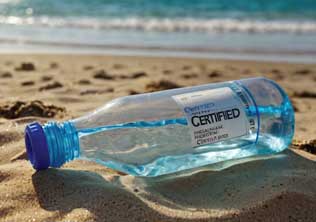
With the deadline for Sustainable Development Goal (SDG) 14 fast approaching, delegates from more than 95 countries renewed calls for a Global Plastic Treaty after talks stalled last year. The call precedes the next treaty talks in Geneva this August.
Over 170 countries are negotiating the said treaty to create a common approach to stunt plastic pollution in oceans and coastal waters, including limiting virgin plastic production, phasing out harmful products like single-use plastics and microplastics, and encouraging a circular economy through better recycling, design, and reuse of plastics.
On another note, it also proposes strict regulation of hazardous chemicals in plastics to protect human health and the environment.
Casting new nets in the packaging market
The global market for recycled ocean plastic packaging is on a positive trajectory, according to a report from Global Market Insights, titled Recycled Ocean Plastic Packaging Market 2025-2034. The market is expected to reach US$1.93 billion by 2034, up from US$647 million in 2024, driven by growing concern over marine plastic pollution, government regulations, and increased industry collaboration. Rising plastic waste in oceans and strong consumer demand for eco-friendly products are prompting companies, especially in the food, beverage, and cosmetics sectors, to use recycled packaging.
Certification systems such as OceanBound Plastic, the Global Recycled Standard (GRS), and Plastic Neutral add credibility and build consumer trust. Brands use these certifications to meet environmental standards and enhance product appeal in the retail space.
Polyethylene terephthalate (PET) remains the most widely used recycled material due to its durability and food-grade compatibility, followed by increased use of polystyrene (PS) and bag materials in retail and e-commerce.
The food and beverage industry led adoption in 2024, while the e-commerce and retail sectors are expected to grow the fastest through 2034.
Regionally, the US, China, Germany, South Korea, and Japan are reportedly advancing the market through strict regulations, investment in recycling infrastructure, and promot ion of c i r cular economy prac t i ces . Technological innovations in sorting and processing are also improving the scalability and quality of ocean plastic packaging globally.
The recycled ocean plastic packaging industry spans multiple tiers such as packaging manufacturers, material suppliers, and recyclers, but nevertheless, still remains fragmented due to differing regulations, recycling technologies, and sustainability partnerships. Moreover, new products and industry alliances are helping oceanbased recycled plastics gain ground.
(PRA)SUBSCRIBE to Get the Latest Updates from PRA Click Here»

